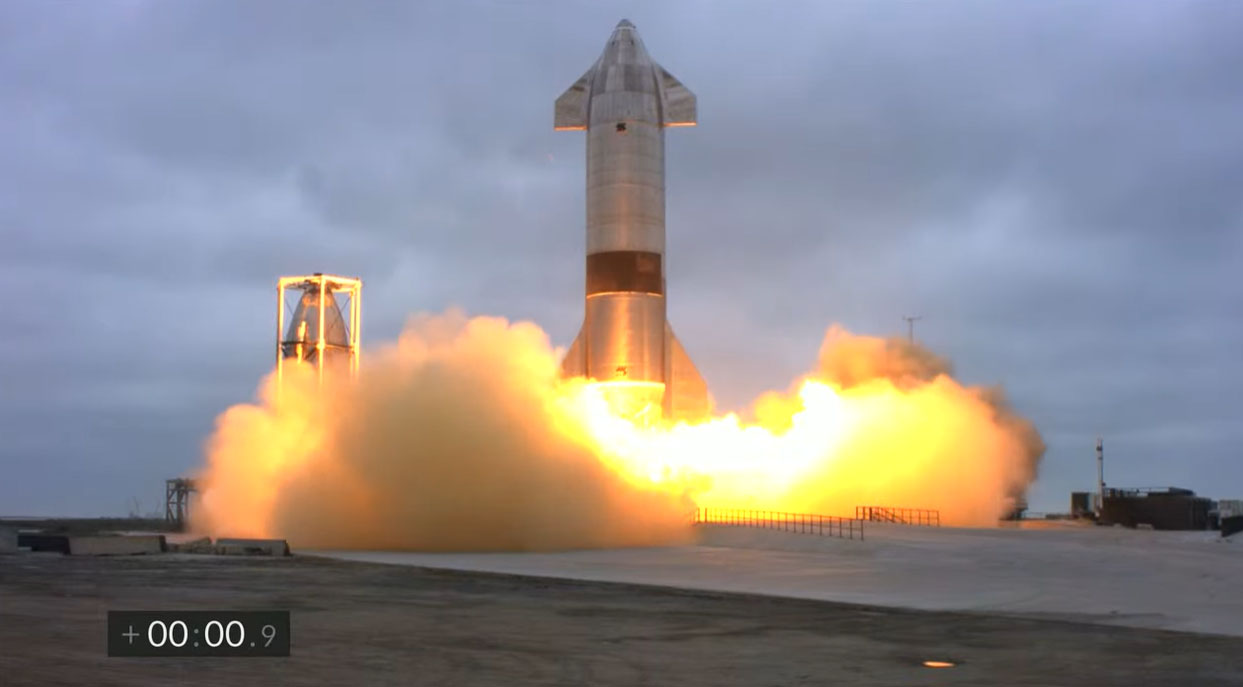SpaceX plans for 1st orbital Starship flight hint at Texas-to-Hawaii trip
A Starship prototype will launch from South Texas and splash down off Hawaii.

SpaceX is getting Starship ready for its first orbital flight.
The company plans to launch a prototype Starship vehicle from the usual location near Boca Chica, Texas, and do a round-the-world uncrewed flight that will splash down off the coast of Hawaii, according to a document filed with the U.S. Federal Communications Commission (FCC) that was first reported by The Verge.
A flight date has not yet been announced, although SpaceX founder and CEO Elon Musk has said he hopes to get Starship into orbit by the end of 2021.
Related: SpaceX's Starship and Super Heavy rocket in pictures
Starship consists of two elements, both of which are designed to be fully reusable: a spacecraft called Starship and a giant first-stage booster known as Super Heavy.
During the upcoming orbital mission, SpaceX plans to return the first stage — likely a Super Heavy on its debut flight, according to media reports — to Earth about 6 minutes after liftoff. But Super Heavy won't come down at the launch site; the target landing zone is a patch of the Gulf of Mexico about 20 miles (32 kilometers) off the South Texas coast, according to the document.
"The orbital Starship will continue on flying between the Florida straits," the document added. "It will achieve orbit until performing a powered, targeted landing approximately 100 km (62 miles) off the northwest coast of Kauai in a soft ocean landing."
Get the Space.com Newsletter
Breaking space news, the latest updates on rocket launches, skywatching events and more!
SpaceX wants to "collect as much data as possible during flight" to learn more about the entry dynamics of Starship, because the flight profile "is extremely difficult to accurately predict or replicate computationally," the document states. Such data is expected to inform future vehicle designs and better modeling.
The orbital plans were filed days after SpaceX finally stuck the landing during a high-altitude Starship test flight — a mission performed by the SN15 vehicle, which lifted off from South Texas on May 5. Four of SN15's predecessors had attempted this flight, but all of them ended up in pieces. One of those vehicles, SN10, appeared to touch down safely in March, but a fire quickly broke out at is base and the craft exploded.
SpaceX has been rapidly evolving the Starship design using the "lessons learned" from each flight. For SN15, for example, SpaceX representatives listed "vehicle improvements across structures, avionics and software, and the engines … [to] allow more speed and efficiency throughout production and flight: specifically, a new enhanced avionics suite, updated propellant architecture in the aft skirt and a new Raptor engine design and configuration."
SpaceX plans to eventually use Starship to ferry people and cargo to the moon, Mars and other places far from Earth. Musk has said that, if testing proceeds as planned, Starship and Super Heavy could be fully operational sometime in 2023, although he acknowledged he tends to have ambitious timelines.
Follow Elizabeth Howell on Twitter @howellspace. Follow us on Twitter @Spacedotcom and on Facebook.
Join our Space Forums to keep talking space on the latest missions, night sky and more! And if you have a news tip, correction or comment, let us know at: community@space.com.

Elizabeth Howell (she/her), Ph.D., was a staff writer in the spaceflight channel between 2022 and 2024 specializing in Canadian space news. She was contributing writer for Space.com for 10 years from 2012 to 2024. Elizabeth's reporting includes multiple exclusives with the White House, leading world coverage about a lost-and-found space tomato on the International Space Station, witnessing five human spaceflight launches on two continents, flying parabolic, working inside a spacesuit, and participating in a simulated Mars mission. Her latest book, "Why Am I Taller?" (ECW Press, 2022) is co-written with astronaut Dave Williams.









